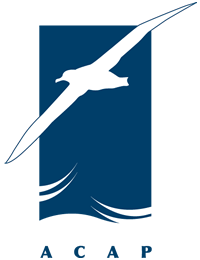ACAP Conservation Guidelines
Seabird bycatch mitigation advice and guides
♦ Seabird Bycatch Mitigation Fact Sheets
♦ Seabird Bycatch Identification Guide
♦ Hook Removal from Seabirds Guide
____________________________________________________________________________________________
Light Pollution Guidelines - external resources
The Australian Department of the Environment and Energy in collaboration with the Western Australian Department of Biodiversity, Conservation and Attractions has developed National Light Pollution Guidelines for Wildlife including Marine Turtles, Seabirds and Migratory Shorebirds. The National Light Pollution Guidelines aim to raise awareness of the potential impacts of artificial light on wildlife and provide a framework for assessing and managing these impacts around susceptible listed wildlife. Published January 2020.
Seabirds Landing on Ships - IAATO guidelines. What to do if you find birds and how to prevent birds from landing on the ship. Also available in Simplified Chinese:
海鸟登船 - IAATO野外操作手册. 发现鸟类该怎么办. 如何防止鸟类登船.
Guidelines for Ecologically Responsible Lighting. Protecting the Nocturnal Environment of the Maltese Islands for Seabirds and Beyond. BirdLife Malta LIFE Arċipelagu Garnija Project. This Guideline aims to provide local councils, architects and developers with best practice guidelines for the design and assessment of sustainable, cost-effective and seabird friendly lighting. Published July 2020.
______________________________________________________________________________________________
Rehabilitation of Procellariiformes - external resource (in Portuguese)
Hurtado, R., Saviolli, J.Y. & Vanstreels, R.E.T. (Eds) 2020. Reabilitação de Procellariiformes: (albatrozes, petréis, pardelas). 111 pp. ISBN 978-85-8136-138-3. See review in ACAP Latest News.
______________________________________________________________________________________________
© 2024 ACAP. All rights reserved. Privacy Policy Manage Your Data LoginLogout

 English
English  Français
Français  Español
Español